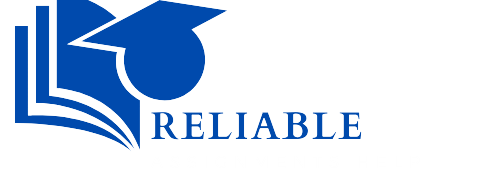Suffolk Leadership and Management Academy
Assignment Brief
| Course/Programme: | MSc International Business and Management (IBM) | |||
| Level: | 7 | |||
| Module Title: | Managing Economics and Finance (MEF) | |||
| Module Leader: | ||||
| Assignment title: | Economics and Finance Analysis Report | |||
| Assignment number: | 1 | |||
| Weighting: | 100% of overall module grade | |||
| Date given out: | ||||
| Submission date: | ||||
| Eligible for late submission (3 calendar days, with penalty)? | Yes | |||
| Method of submission: | X | Online only | Online and paper copy | |
| Special instructions for submission (if any): | Completed assignment is to be submitted to the UoS Brightspace only | |||
| Date for results and feedback: | ||||
| Learning outcomes assessed: | On successful completion of this module, the student will be able to: Evaluate the rigor and validity of informational problems for markets and organisations and goals and decision-making within the firm using behavioural theories. Critically demonstrate the goals and governance of the firm, how financial markets work and appreciate the importance of finance. Demonstrate a range of empirical and theoretical aspects of capital budgeting under uncertainty, market efficiency, portfolio theory, asset pricing models and portfolio management. Critically evaluate the contribution of economics to strategic management, mergers and acquisitions, agency problems of corporate governance. Demonstrate principles and practices involved in leasing, mergers and acquisitions and the functions and valuation principle of options, futures, warrants and convertibles. | |||
Managing Economics and Finance (MEF) Assignment Help
Assignment brief:
1. Choose a company listed on the London Stock Exchange in the UK. Analyse the Corporate Governance section of its annual report:
- Explain how, in your view, the Governance part of the annual report helps overcome the principal-agent problem between shareholders and the
management of the company. (20 Marks)
- Examine the “Connecting with our Stakeholders” part of the Corporate Governance Report. How does the Board of Directors of the chosen company interact with stakeholders and to what effect? (20 Marks)
2.
- You are a fund manager in ABC Asset Management, and you wish to invest in two different funds. Fund A is a stock fund and fund B is comprised of long-term corporate bond. The expected return and standard deviation of the funds are as follows:
| Expected Return | Standard Deviation | |
| Stock Fund A | 18% | 20% |
| Bond Fund B | 12% | 12% |
The correlation between funds A and B is 0.30. Assume there is no short selling. Calculate the minimum-variance portfolio of the two risky funds and show the expected return and standard deviation of this portfolio. (20 Marks)
- Meanwhile, you have evaluated the performance of two stocks Alpha plc and Beta Plc. You have gathered the following information:
- Risk free rate is 5.0%.
- The expected return on the market portfolio is 10.0%.
- The beta of Alpha plc is 1.4.
- The beta of Beta plc is 0.8.
Based on your own analyses, ABC Assets Management’s forecasts of the returns on the two stocks are 14.0% for Alpha plc and 8.0% for Beta plc. Calculate the required rate of return for Alpha plc and Beta plc stocks by using Capital Asset Pricing Model (CAPM). Indicate whether each stock is overvalued, undervalued or fairly price and thereby provide recommendation whether to buy, hold or sell these two stocks. (20 Marks)
3. Graph the supply and demand curves for the smartphone market, clearly labelling both axes. Then show the effect on equilibrium price and quantity of each of the following changes (consider each separately):
- The price of tablets decreases, assuming tablets and smartphones are substitutes.
- The cost of manufacturing microchips, an input to smartphone production, rises.
- Consumers expect that smartphone prices will be higher in the future.
- There is an advancement in technology that reduces the cost of smartphone production.
- New research indicates that excessive use of smartphones can lead to health issues.
(4 Marks Each, Total 20 Marks)
Marking Criteria (weighting 100%)
| Section | Content | Mark |
| Introduction | Use key references to selected academic journals Link to the Analysis | 5% |
| Analysis and Critical Evaluation | Critical discussion throughout the analysis A well-developed argument which progresses through the essay and with good transitions between paragraphs. | 80% |
| Conclusions | • Clearly presented conclusions based on the preceding analysis | 5% |
| Spelling, Grammar and Punctuation | • Spell checked with good grammar and punctuation | 5% |
| Referencing | • Correctly applied Harvard Referencing | 5% |
| TOTAL MARKS: | 100% |
Format – further guidance:
- Assignment Cover Sheet o Module Name o Assessment Title o Word Count o Student ID number
- You will include a correctly formatted reference list and in-text citations using UoS Harvard referencing format. Refer to http://libguides.uos.ac.uk/friendly.php?s=academicskills/referencing.
- Your work should be presented in a report format, using headings and including a content page and page numbers.
- Please choose a clear font (either Arial or Times New Roman) using size 12
- Please ensure your work is 1.5 spacing.
- Your total word limit is approximately 3,500 words (+/-10%).
Employability Skills
This module will provide students with opportunities to acquire and demonstrate the following employability skills: independent learning; research; critical thinking and analysis; problem solving; interpersonal skills and communication skills (written and oral).
Assessment Criteria:
| Distinction (70% – 100%) | Merit (60%-69%) | Pass (50% – 59%) | Refer (<50%) | |
| Coherent and detailed knowledge and understanding of the subject area, at least some of which is informed by the latest research and/or advanced scholarship within the discipline | Excellent systematic, theoretical and conceptual understanding of knowledge at or informed by the forefront of the field of study and showing sophisticated depth, breadth, detail and clarity | An effective, systematic, theoretical and conceptual understanding of knowledge mostly at or informed by the forefront of the field of study and showing good depth, breadth, detail and clarity | A sufficient but limited level of systematic, theoretical and conceptual understanding of knowledge at times at or informed by the forefront of the field of study but showing adequate depth, breadth, detail and clarity | Limited knowledge and understanding of the subject matter shown. Work is not sufficiently informed by scholarship within the field of study and is insufficient in depth, breadth, detail or clarity |
| Cognitive and intellectual skills | Sophisticated critical evaluation and awareness of current problems, and contemporary issues and debates that draws on new insights or perspectives within the field. Work demonstrates a very high level of originality and creativity in the student’s approaches to synthesising current research and advanced scholarship within the subject area | An effective level of critical evaluation and awareness of current problems and contemporary issues and debates that draws on new insights or perspectives within the field. Work demonstrates some effective originality and creativity in synthesising current research and scholarship within the subject area. | A sufficient but limited level of critical evaluation and awareness of current problems and contemporary issues and debates, with some reference to new insights or perspectives within the field. Limited evidence of originality and creativity in synthesising current research and scholarship within the subject area | Insufficient evidence of critical evaluation and awareness of current problems and contemporary issues and debates. Insufficient reference to new insights or perspectives within the field and lacking in originality and creativity in synthesising current research and scholarship within the subject area |
| Application of theory to practice | An excellent level of originality and innovation in the application of knowledge and theory to professional practice within the discipline. | A good level of originality and innovation in the application of knowledge and theory to professional practice. Demonstration of consistently good critical | A reasonable but limited level of originality and innovation in the application of knowledge and theory to professional practice within the discipline. Demonstration | Little evidence of originality and innovation and a significant lack of application of knowledge and |
| Demonstration of excellent critical awareness and evaluation and the ability to effectively critique and employ current academic literature in making reasoned judgements and decisions in relation to complex issues and problems at a professional level | awareness and evaluation and reasonable ability to use the academic literature in making reasoned judgements and decisions in relation to complex issues and problems at a professional level | of some good critical awareness and evaluation and some ability to use the academic literature in developing judgements and decisions in relation to complex issues and problems at a professional level | theory to professional practice demonstrating little critical awareness and evaluation and a lack of ability to use the academic literature to make judgements and decisions in relation to complex issues and problems at a professional level | |
| Reading and referencing | A very high level of critical engagement across an extensive range of relevant and current academic, research, policy- and practice-related literature demonstrating deep and appropriate reading and initiative along with highly consistent accurate referencing | A good level of critical engagement across a good range of relevant and current academic, research, policy- and practice-related literature demonstrating appropriate reading and some initiative along with consistent accurate referencing. | Sufficient critical engagement with a reasonable range of relevant and current academic, research, policy- and practice-related literature demonstrating mainly appropriate reading but limited initiative and/or some minor inconsistencies and inaccuracies in referencing. | Little evidence of critical engagement with relevant and current literature. Poor use of appropriate sources and/or inconsistent and inaccurate referencing |
| Presentation, style and structure | Outstanding presentation of work that is logically and coherently structured with a strong or original central argument(s), conveyed with a high level of fluency and eloquently communicates compelling, coherent conclusions to specialist and non-specialist audiences | High quality presentation of work that is largely logically and coherently structured with a generally strong central argument conveyed with a clarity of expression and which communicates clear conclusions to specialist and non-specialist audiences | Generally good presentation of work that is sufficiently logical and coherent in structure with a discernible central argument. May present limited originality and lack some clarity of expression, but an identifiable conclusion reasonably communicated to specialist and non-specialist audiences | Often poorly presented work that is disorganised, has an ill-formed central argument, and lacks a logical and coherent structure. A lack of clarity of expression or fails to communicate effective conclusions |
| to specialist or nonspecialist audiences |

